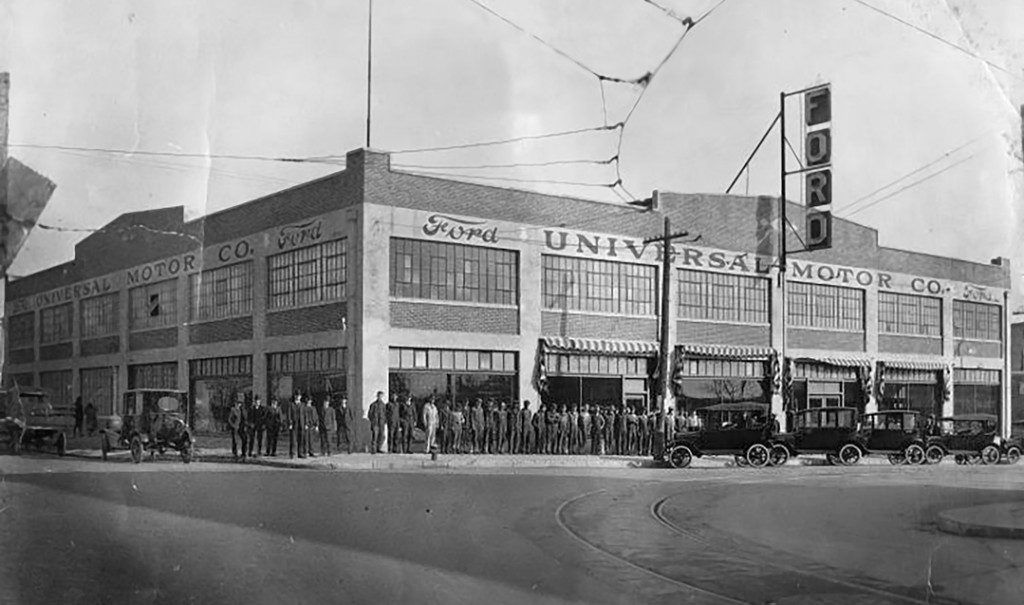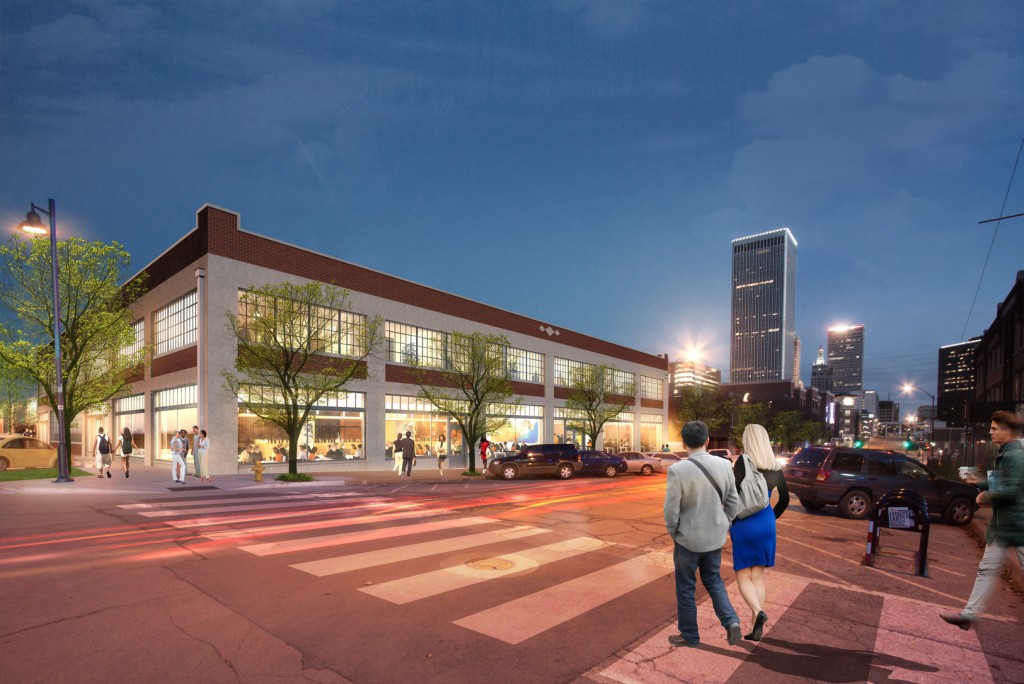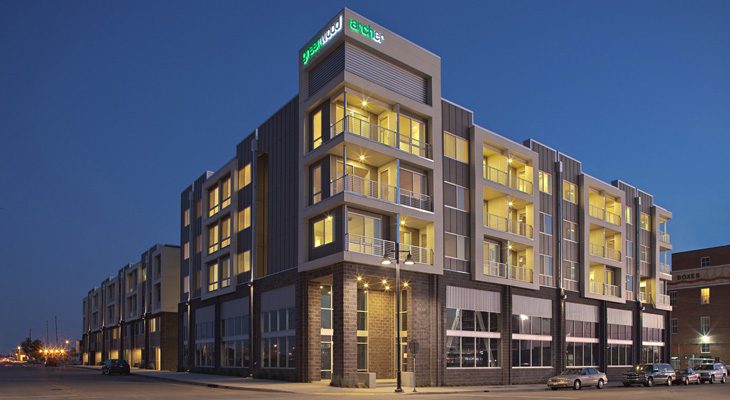
Tulsa
Like downtown Oklahoma City, downtown Tulsa is also rapidly developing to keep up with the demands of its citizens.
“We are seeing almost unbelievable growth in our downtown area,” says Chad Oliverson, the marketing and promotions manager for the Downtown Coordinating Council. “So much of this growth is based on mixed use building, both repurposing and some new developments. The idea that you can live, work and entertain all in one place is where we are headed.”
In downtown Tulsa, each district is unique, and each is a hospitable and diverse community with a strong economy and high quality of life, says Oliverson. When it comes to residential living, downtown Tulsa also offers a lot of variety. Here is a sampling of what the area has to offer broken down by districts.
Blue Dome District
The Blue Dome District is named for its historic Blue Dome Building, which was built in 1924 as a Gulf Oil gas station. It is a must-see for visitors following the historic and famous Route 66 trail.
“This district led the redevelopment and reuse of existing structures and architecture into new services and facilities, providing a wide variety of opportunities and unique experiences for visitors,” says Oliverson.
In recent years, growth in the number of retail shops and restaurants in the area has been impressive. Tallgrass Prairie Table, White Flag and 52 Fitness are a few of the new additions that stand alongside businesses like Lyon’s Indian Store and Lee’s Bicycles, both of which are hovering at the century mark in Tulsa.
Perhaps one of the most inclusive projects in Blue Dome is the introduction of The Blue Dome Market in 2014. The market is home to a healthy mix of shops, restaurants and even a unique gym.
The Tulsa Performing Arts Center, located on the edge of the district, continues to provide tremendous opportunities and impact to downtown and the Tulsa region.
The much-anticipated First Street Lofts project should be completed sometime in the early spring of 2015 with apartment leasing to begin shortly after. The 40,000-square-foot building has five floors, with apartments planned for the second through fifth floors.

Brady Arts District
The Brady Arts District is one of the oldest sections of Tulsa. It is rich with cultural icons, such as the Cain’s Ballroom and the Brady Theater. The buildings in the area that are still standing are primarily red brick and were utilized as warehouses.
Over the past 20 years, the area has morphed into an eclectic collection of bars, restaurants and arts establishments. There has been much revitalization with buildings renovated into new office space and museums while still remaining true to their historic past.
Historic renovation of the Universal Ford Motor Company building at 223 N. Main St. will bring more apartments and ground floor commercial space to the Brady District when it opens in late 2015.
Historic renovation of the Hotel Fox and Fox Building (201-207 N. Main St.) will include apartments and office spaces with ground floor commercial space. It is also expected to open in 2015.
Deco District
The Downtown Deco District Association was formed in 2010 by a group of downtown business owners. The goal of the association is to celebrate Tulsa’s historic Deco District while promoting today’s downtown living, shopping, working and entertainment.
The Vandever Lofts boasts 40 new apartments in the Deco District as the demand for more residential space in the area is very high. Prospective plans for 2015 include the launch of three other residential projects, the 111 West 5th Building Lofts, the TransOK Building and The Denver Y, located in the former YMCA building.
East Village
The East Village, centered at Third Street and Kenosha Avenue, a long-time area of redevelopment efforts, has emerged with a variety of new opportunities, including residential and commercial, as well as dining experiences.
The American Theatre Company has established its home and headquarters in the district and will soon be neighbors with Theatre Tulsa, the oldest community theatre west of the Mississippi, after its pending move.
A variety of design and professional services – such as GuRuStu Group, Pardee Construction, Hogan Assessments and Folsom & Associates – are a few who are building their futures in the district. Personal services, such as Colourblind Organic Salon, Cole Photography, Technical Institute of Cosmetology, Arts and Sciences and Crossfit T-Town, can also be found in the district.
Like many other districts, East Village expects a boom in residential living opportunities in 2015. Currently under construction is the mixed-use development on the former Bill White Chevrolet site as well as eight new townhomes in a development called Urban8. An apartment complex, developed by Nelson Stowe Development LLC, and American Residential Group, called the Hartford Commons, is scheduled to join soon.

Greenwood District
Dubbed America’s “Black Wall Street” by Booker T. Washington, the 35-block Greenwood District surrounded the corner of Greenwood Avenue and Archer Street and became a prosperous center for black commerce in the early 1900s. It was also a hotbed for jazz and blues and the site where Count Basie first encountered big-band jazz. When the tragic and devastating Tulsa Race Riot of 1921 destroyed much of the district, the black community rebuilt. Today, the Greenwood Historical District showcases its heritage through the Greenwood Cultural Center, the Mabel B. Little Heritage House and the John Hope Franklin Reconciliation Park.
The new GreenArch residential development offers retail opportunities at street level of their buildings, a popular trend of downtown.
ONEOK Field, home to the Tulsa Drillers baseball team, is located in the Greenwood District and attracts visitors from all areas of the region.
“The vision of a vibrant urban core conveyed by the Downtown Area Master Plan and PlaniTulsa are being realized through the continued growth in all aspects of our city,” says Oliverson. “The much-maligned surface parking lots are being replaced with hotels, museums, and residential and commercial developments as a new generation of Tulsans is continuing the renaissance of downtown for their future.”























